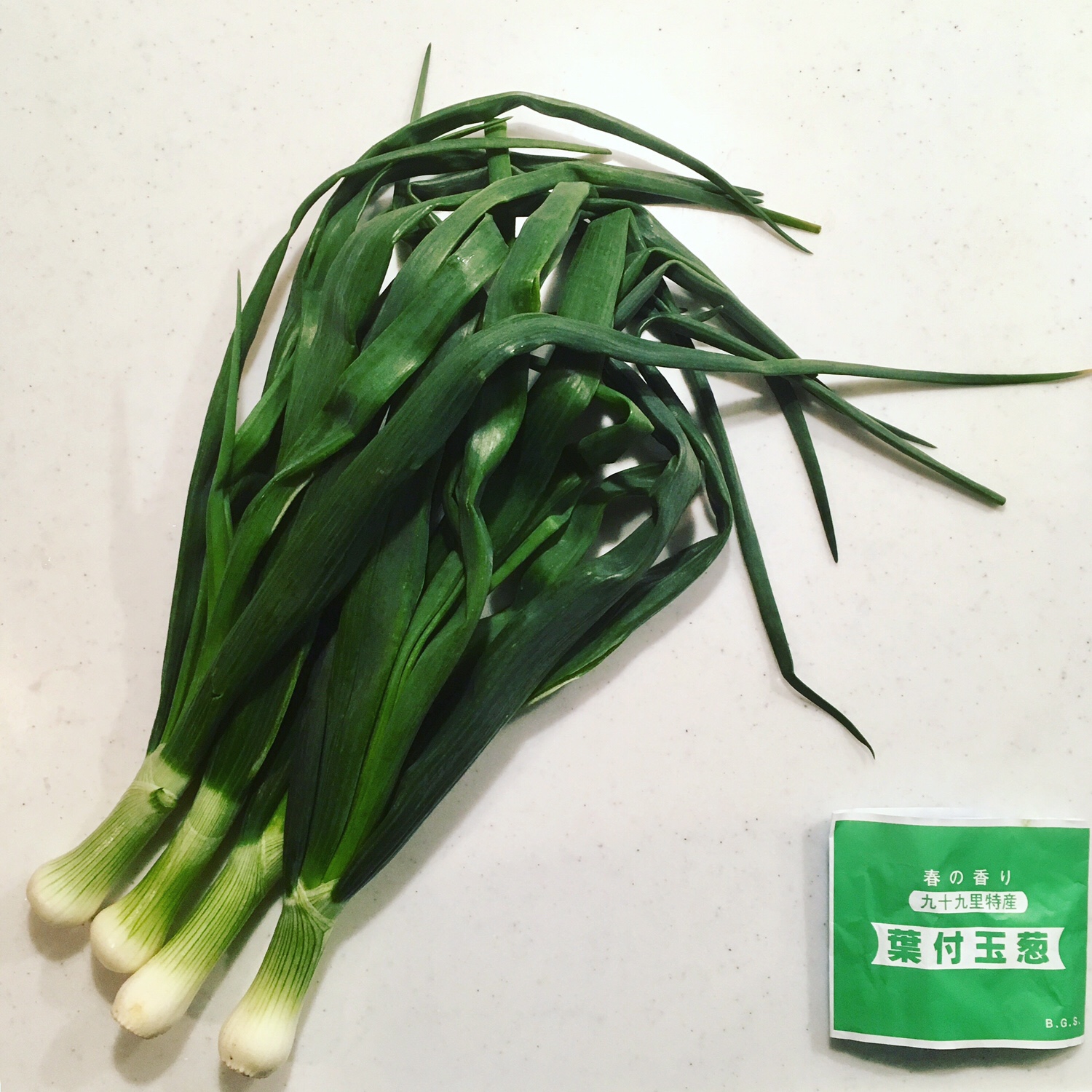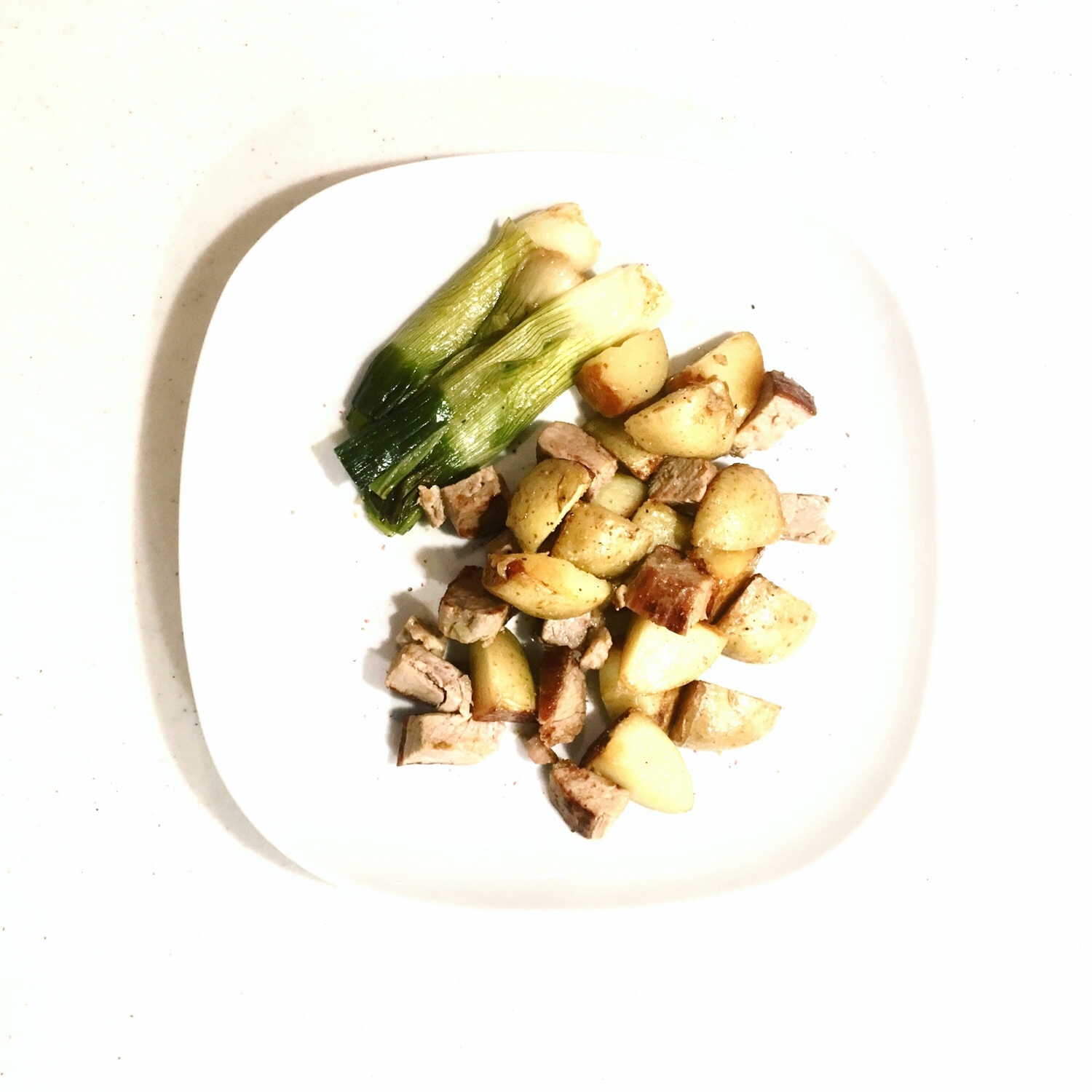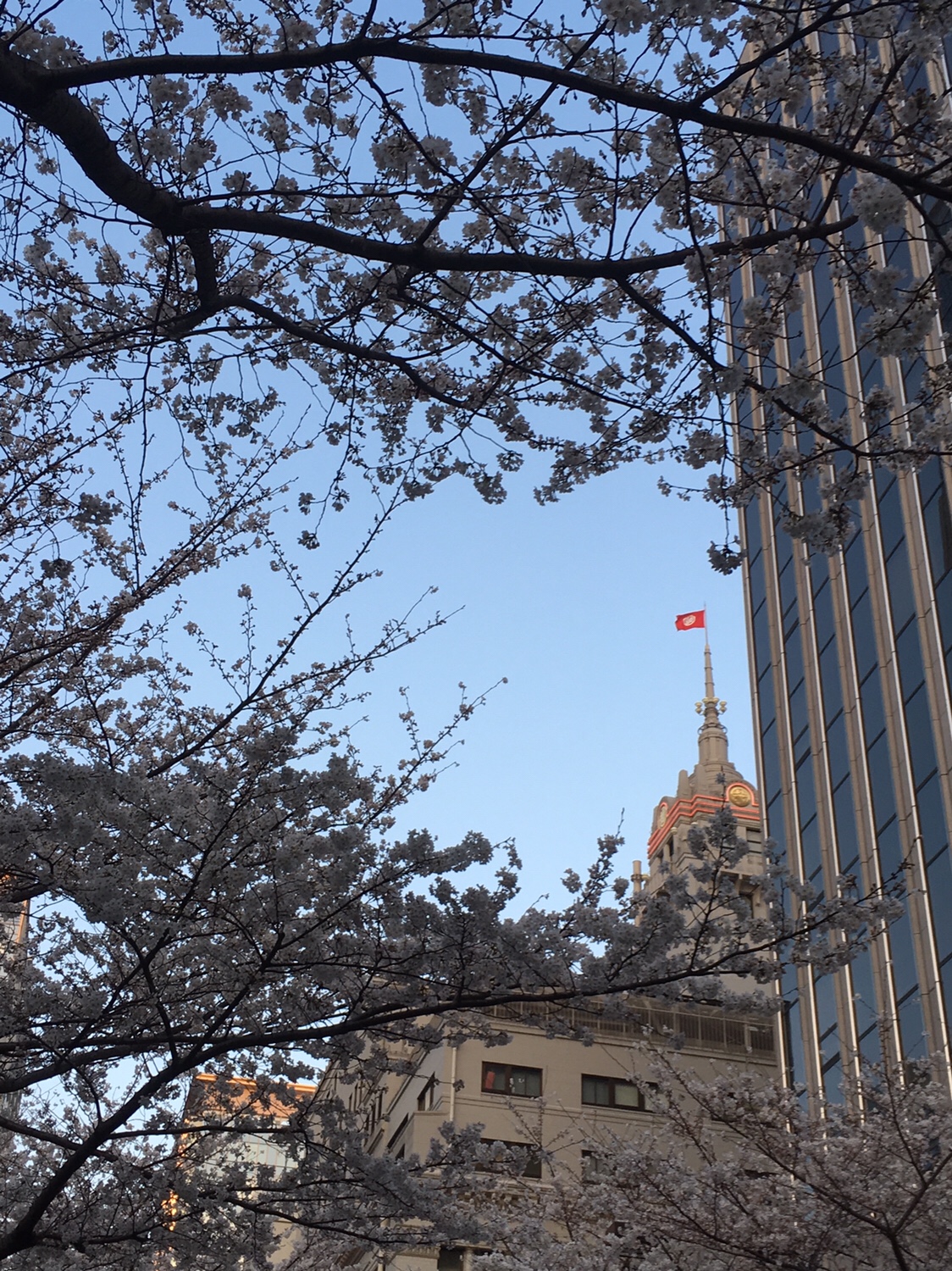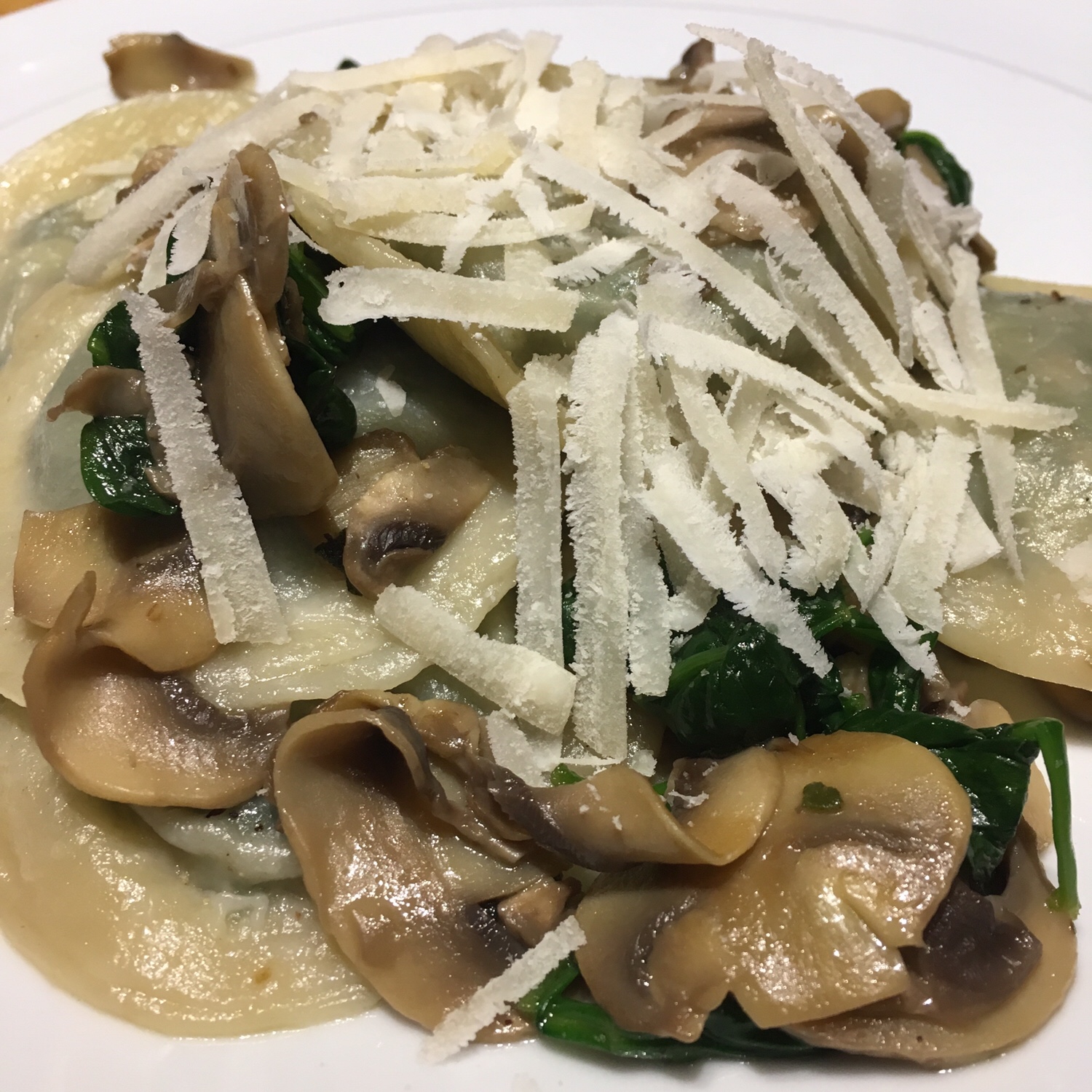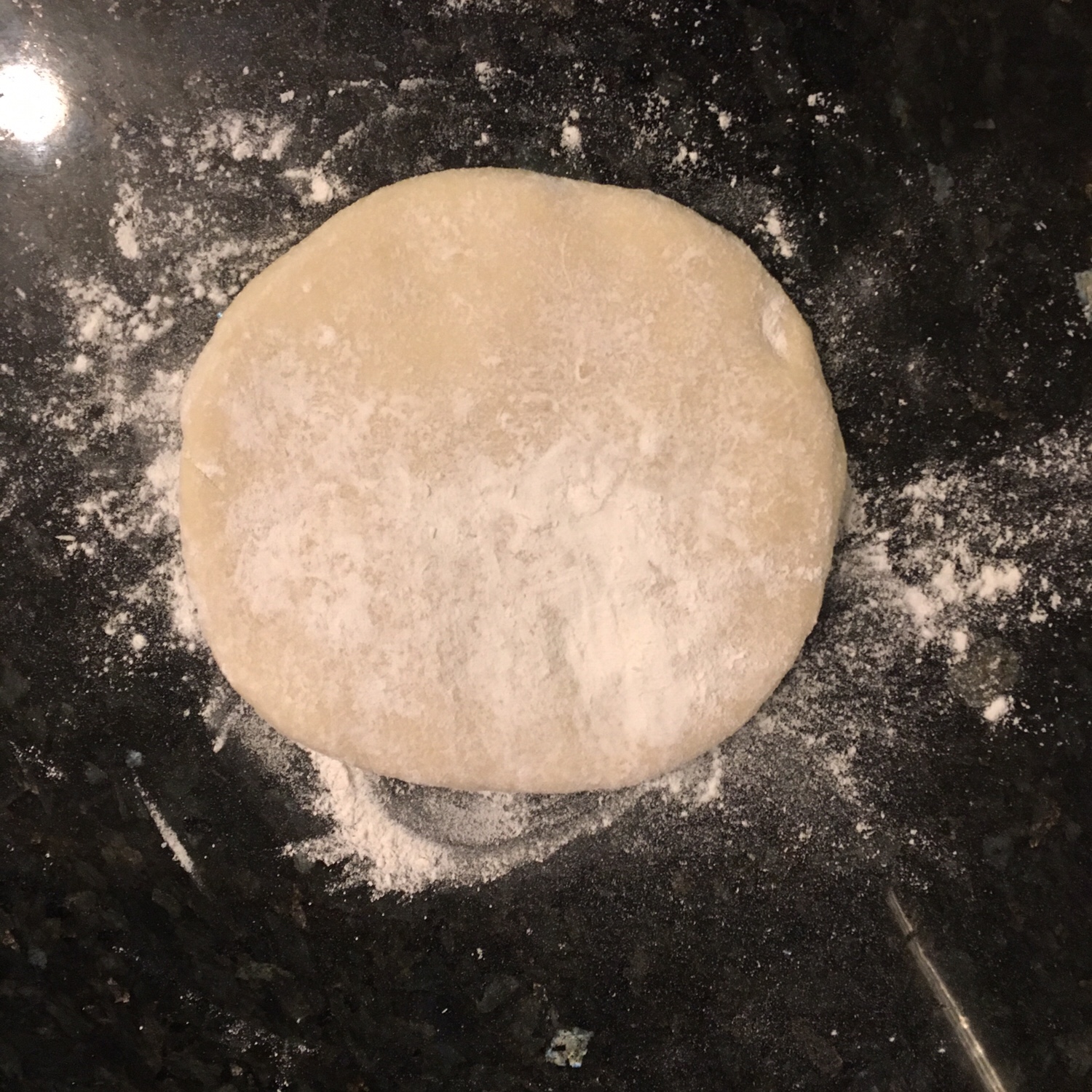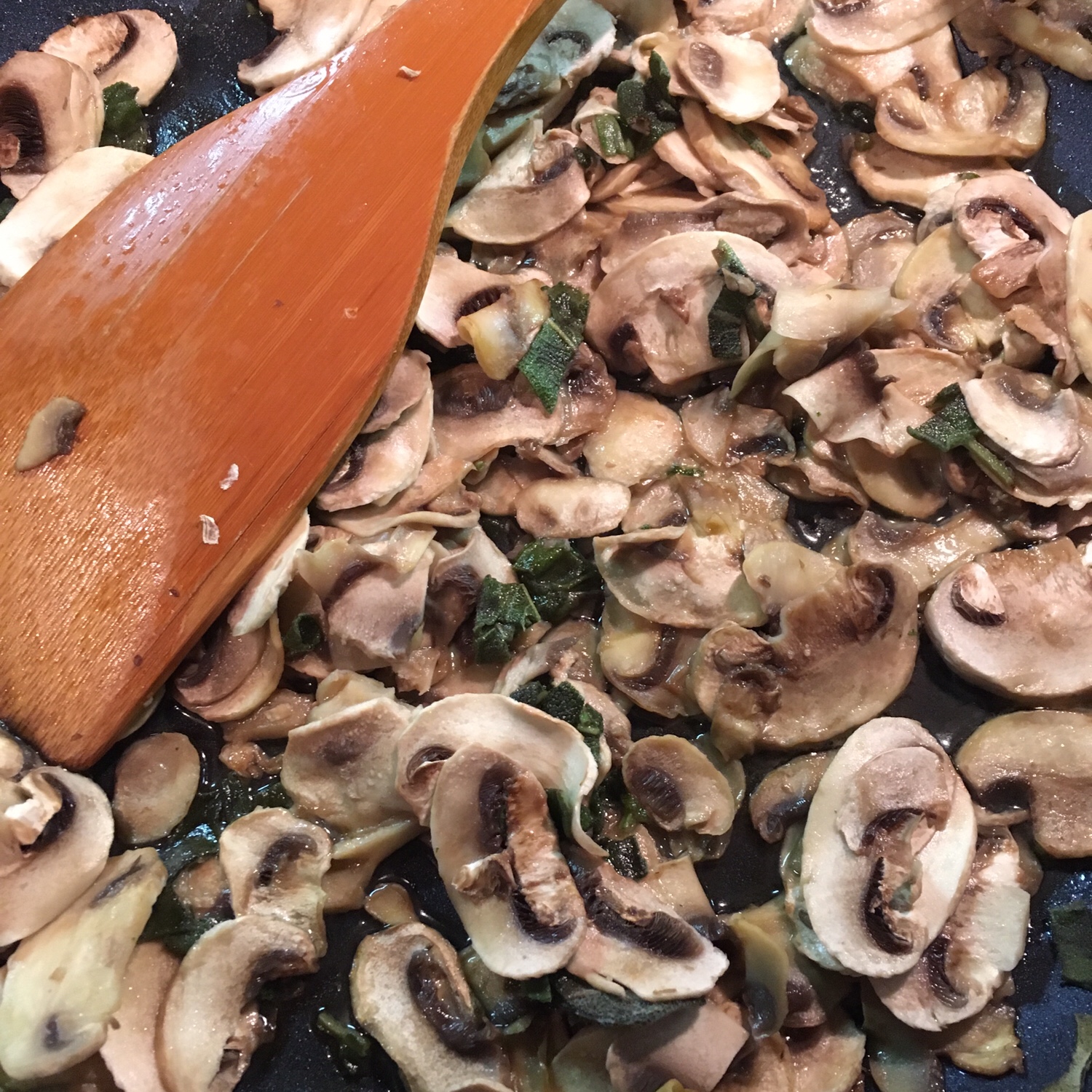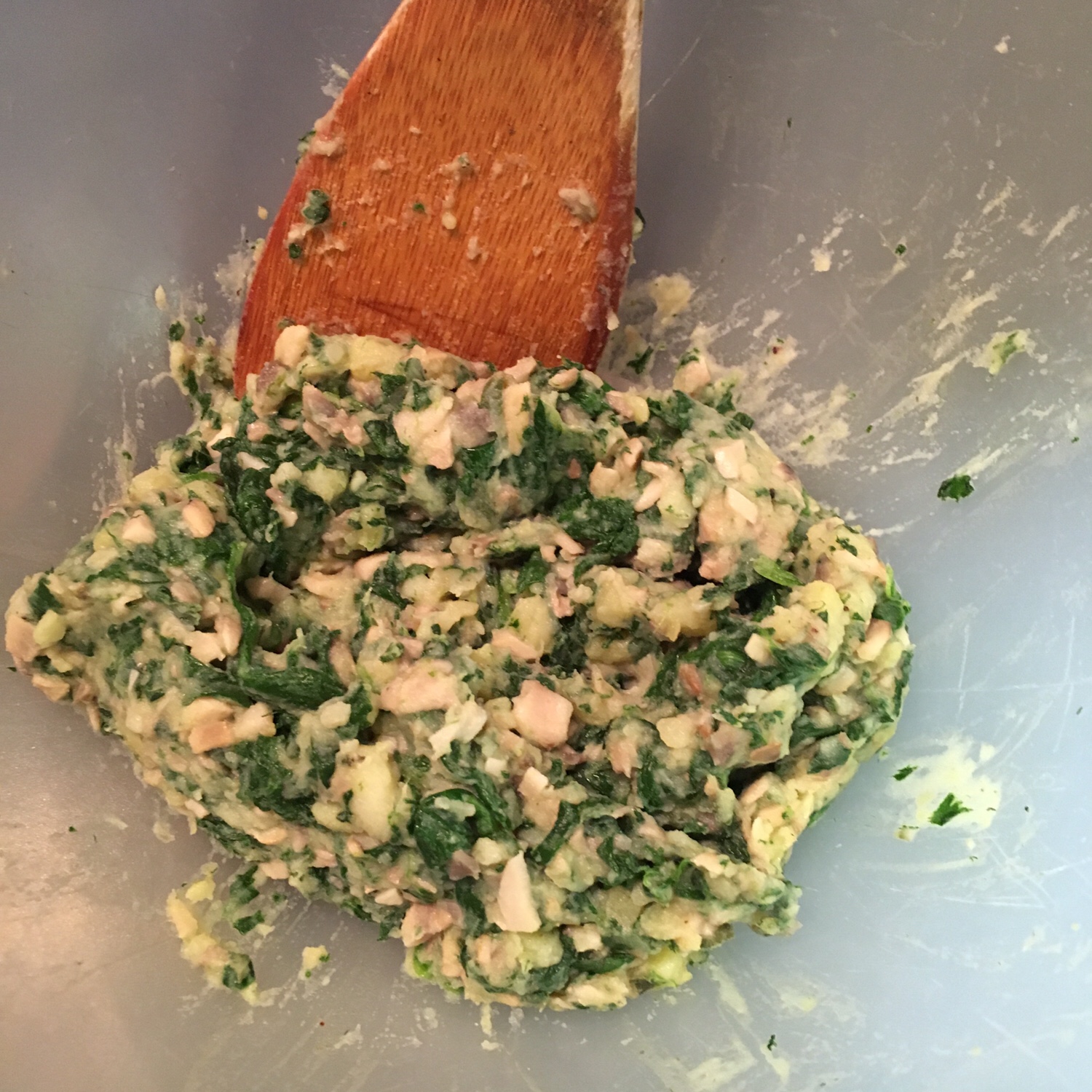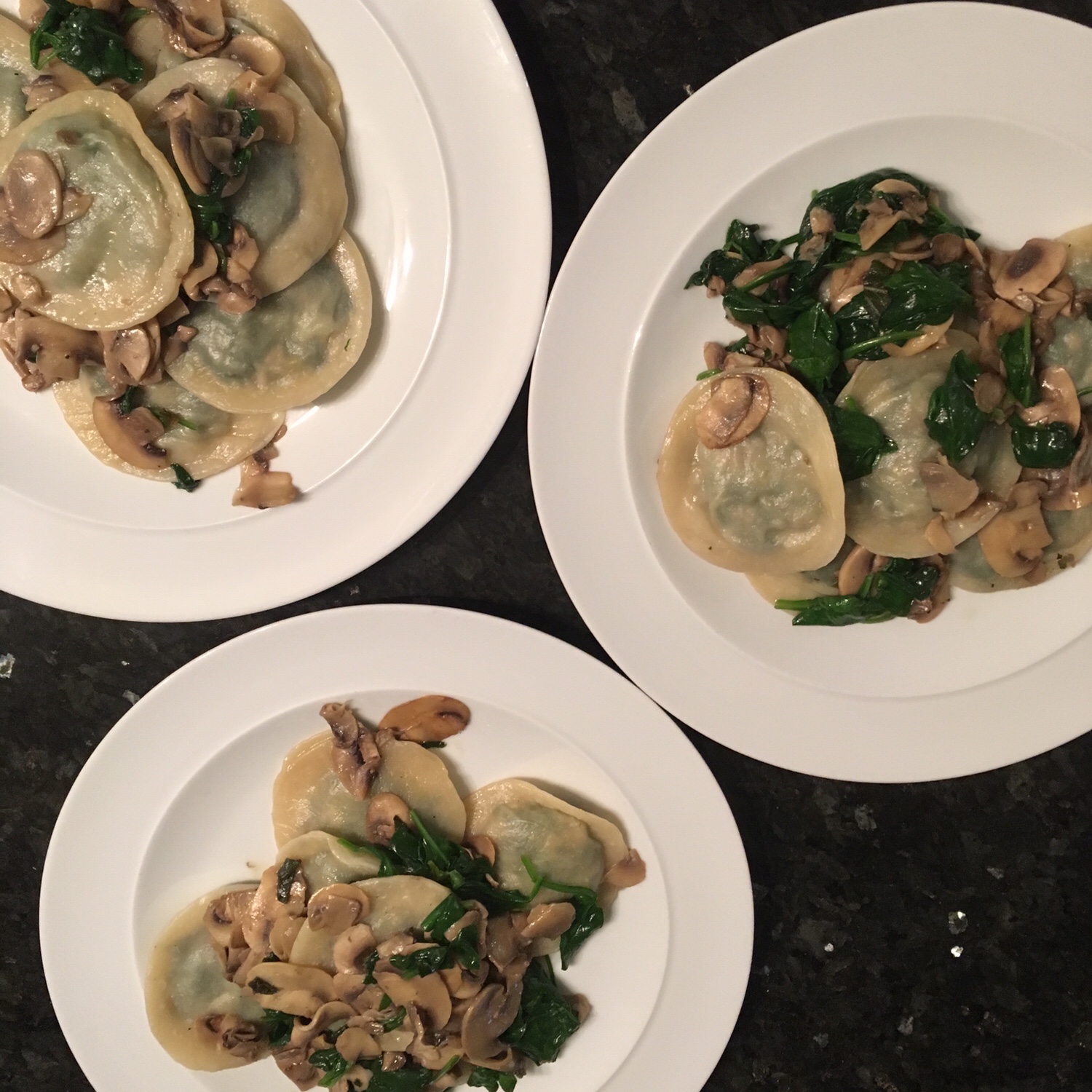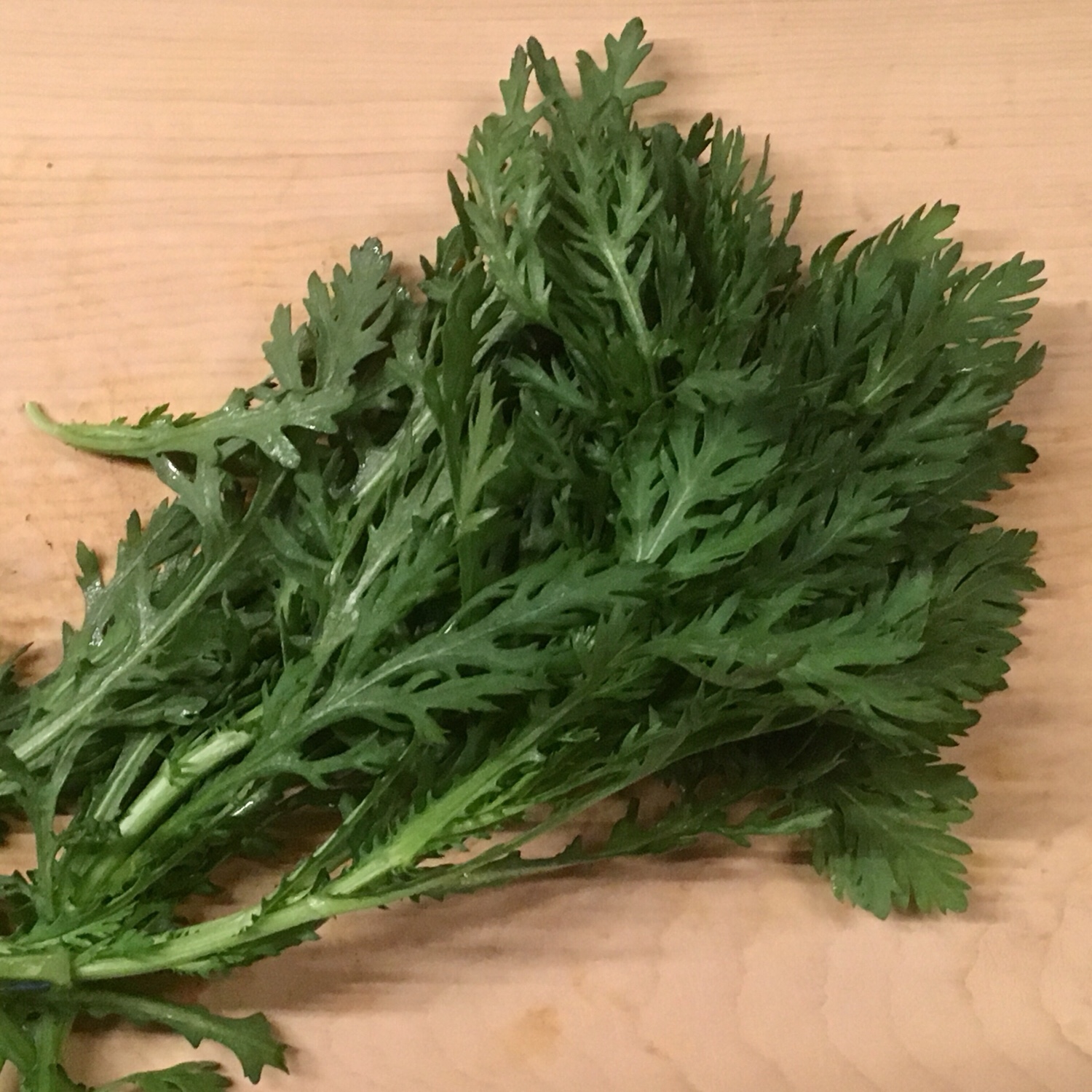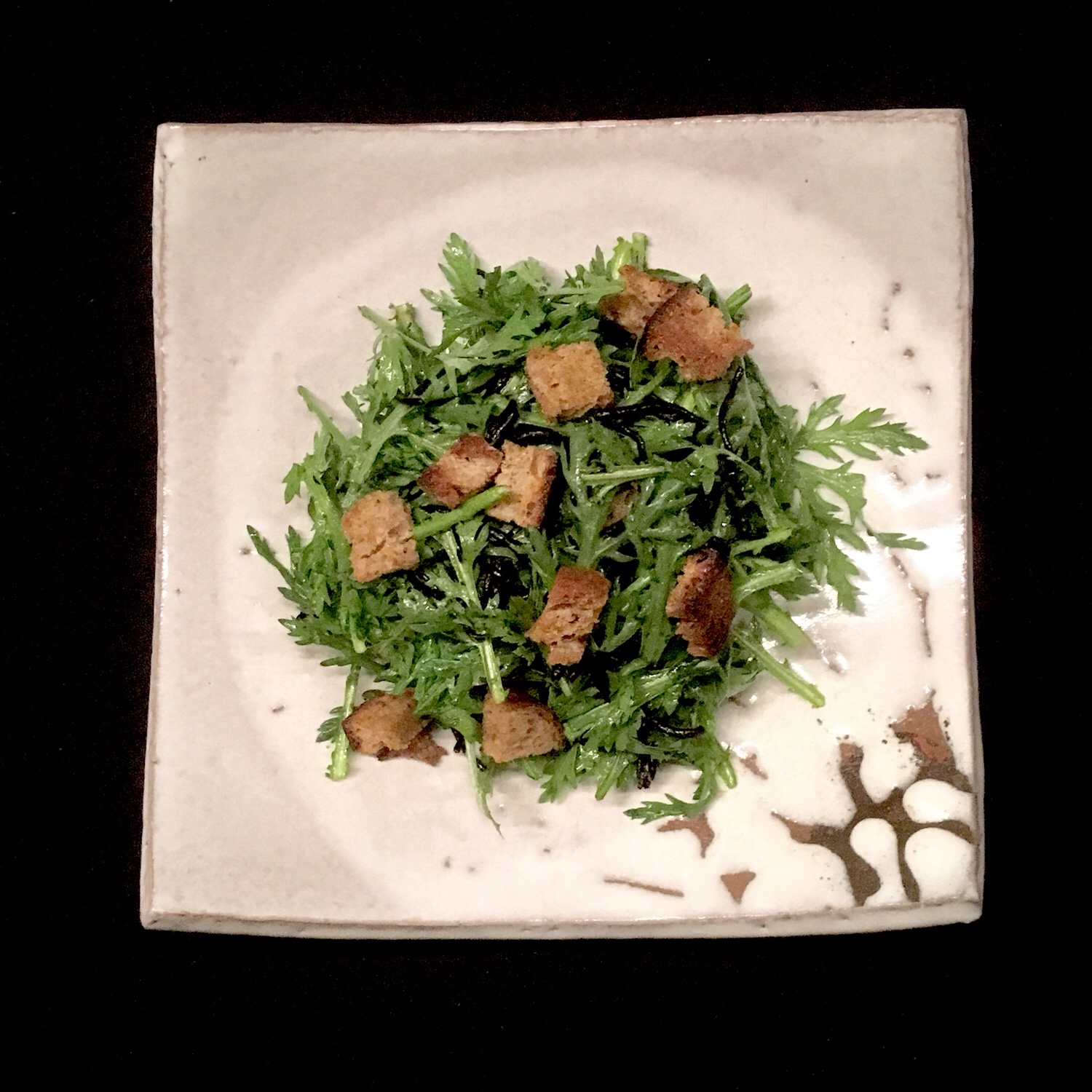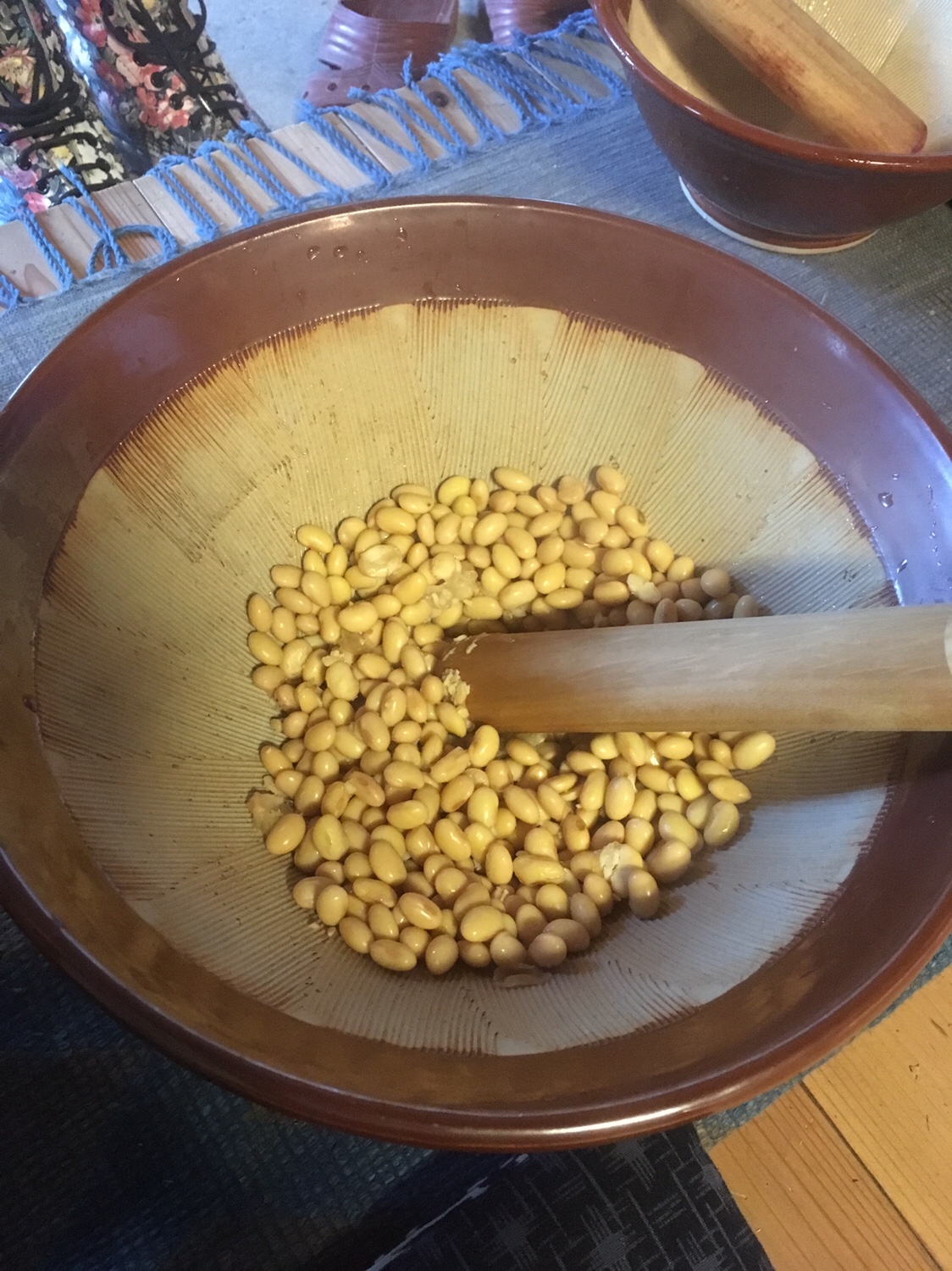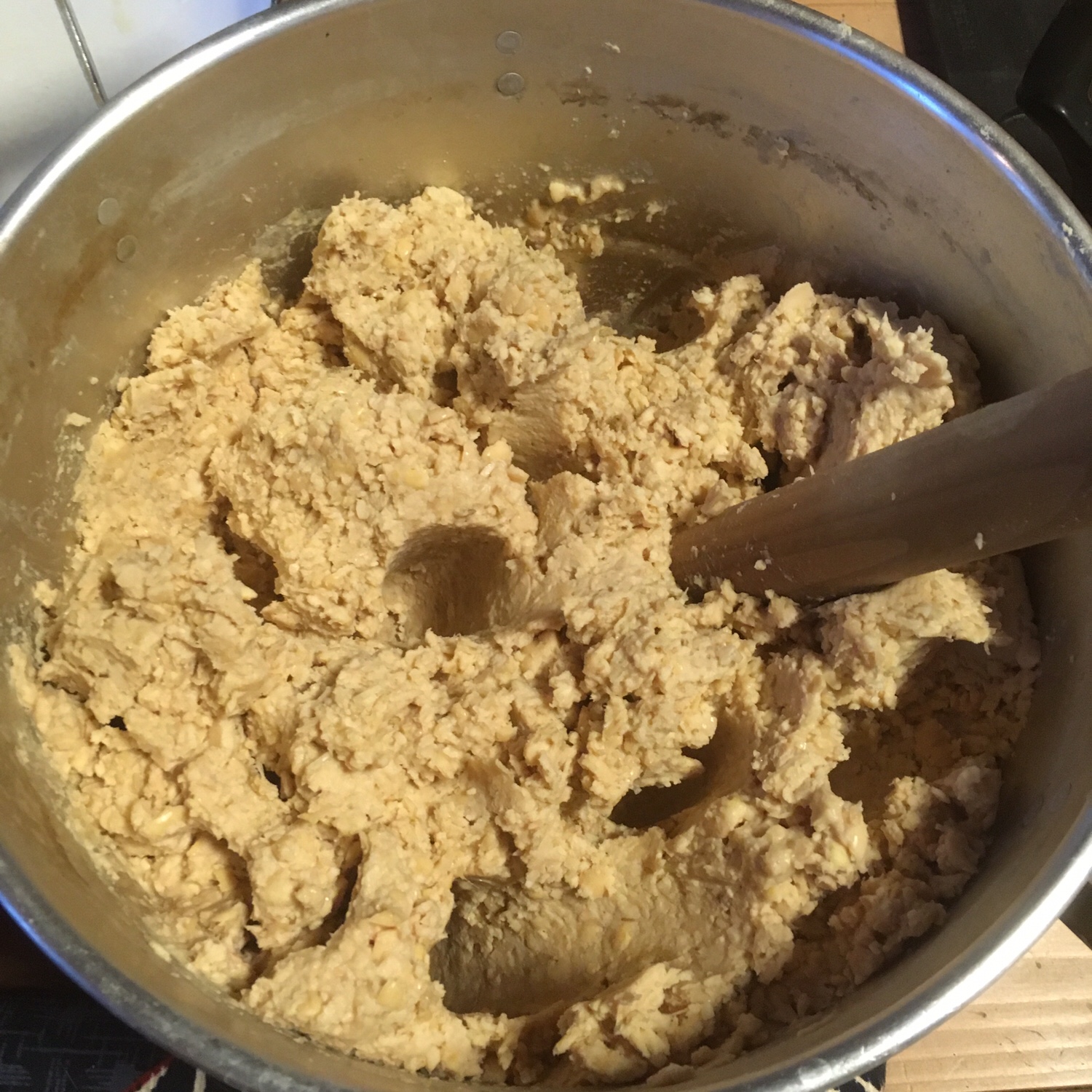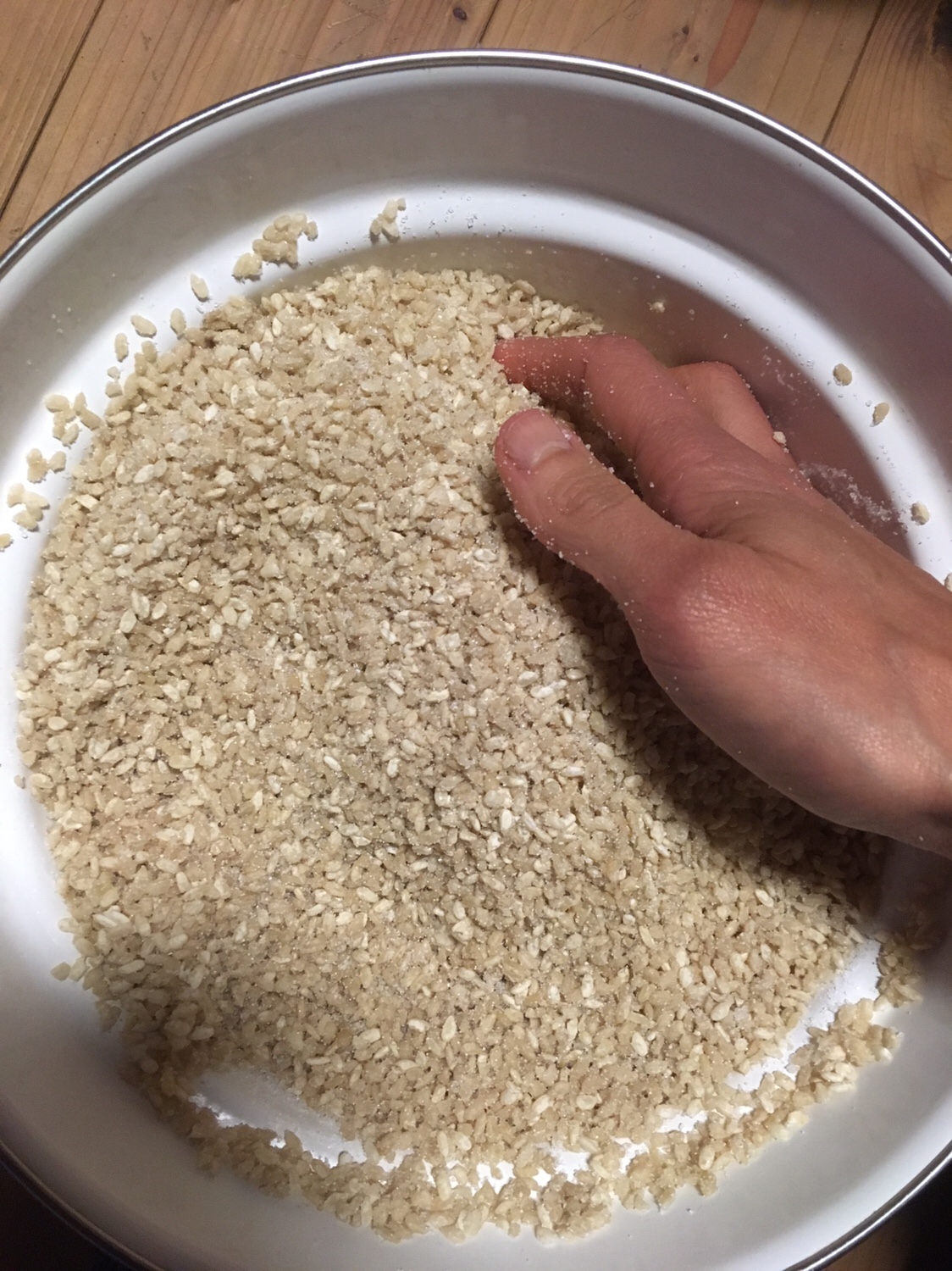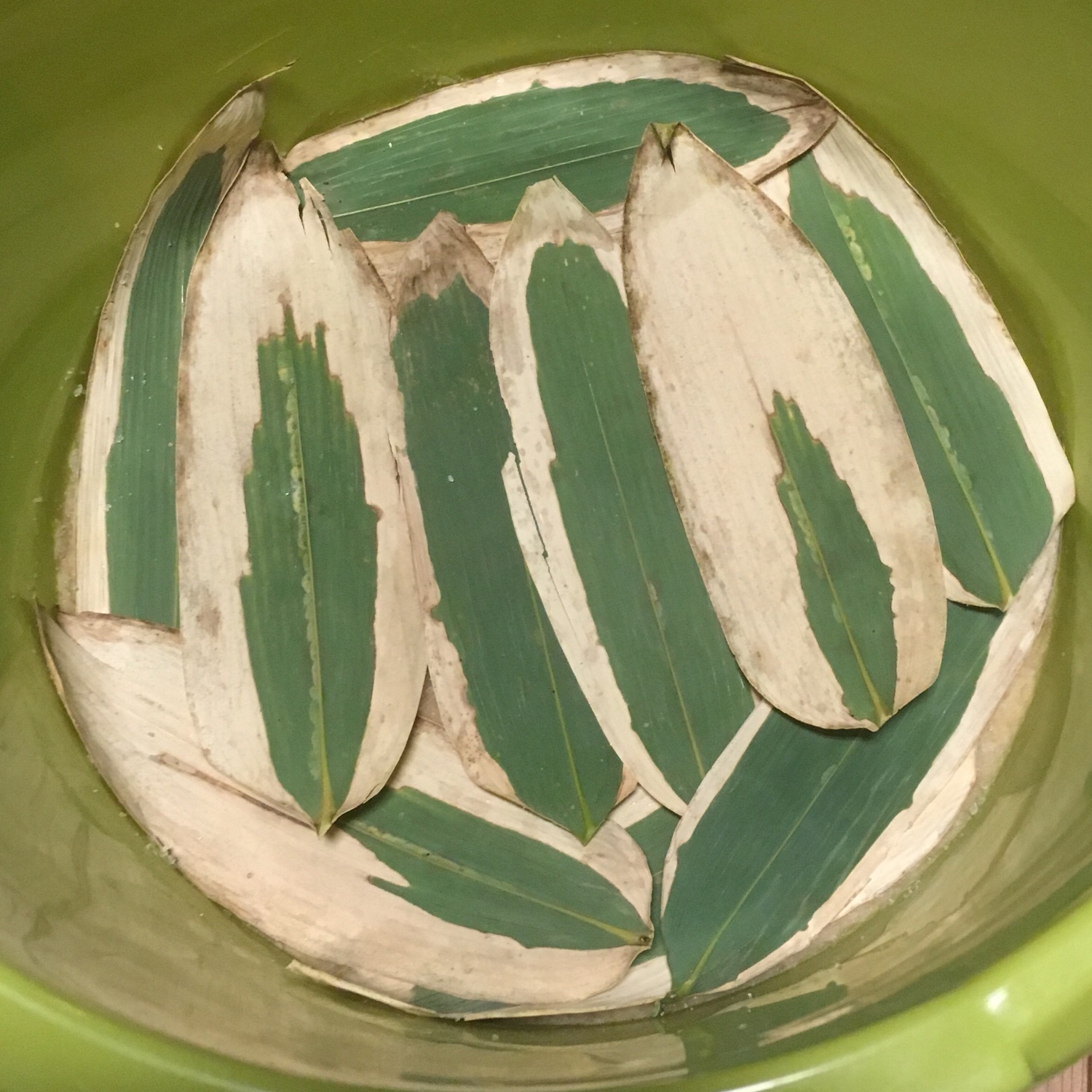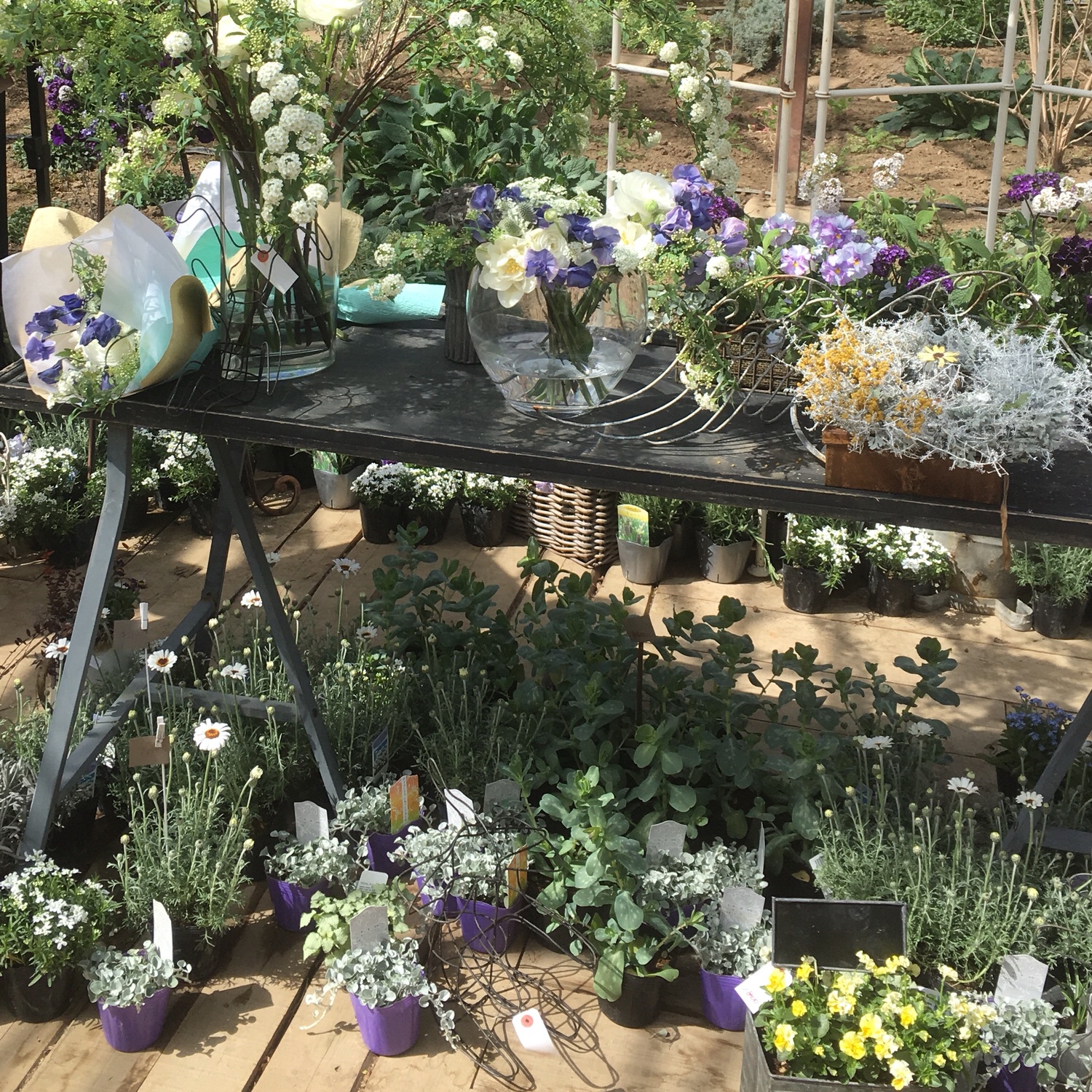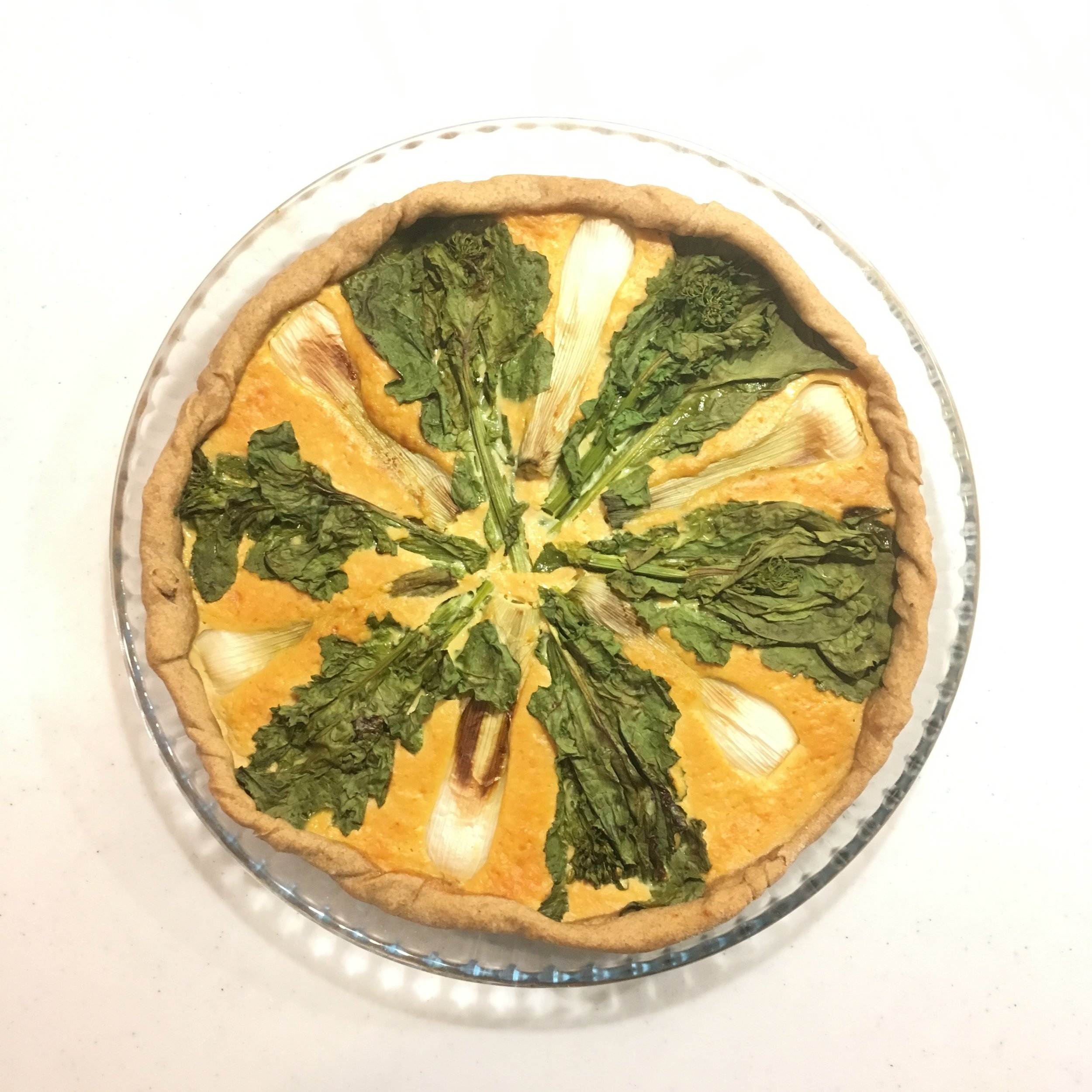As I was explaining in a previous post, my grand mother was really good at cooking leftover and that of meat in particular. I have kept the tradition and I cook once in a while some mironton. But I make often some variations from the original recipe. This time I didn’t use regular onion, but green onions with leaves. They are from Kujukuri, the northern part of Chiba by the ocean, and they are very soft and very sweet. I’ve used some already in some quiche and miso recipe, and I was really happy with the result. Using them in mironton kind of came naturally then. I simply used a bit of olive oil and vegetal oil mixed together. About 5 new potatoes, and a piece of pork filet diced. I cook everything in a pan at medium heat first then high heat, and add the green onions with leaves just halved. Stir once in a while until potatoes are done and onions are soft. That’s it.
